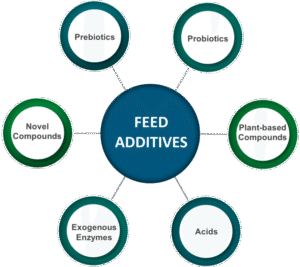Feed microscopy is a flexible, fast and inexpensive feed quality control technique. It is the ideal complement for the classical chemical analyses (Weende, van Soest,), and provides faster general information on ingredient quality. It is especially useful for the identification of tainting or adulterating materials, or for quantitative determinations when specific physical or chemical methods do not exist. It can become a part of any quality control system because the required equipment is simple and affordable for any feed manufacturer.
Thank you for reading. Don't forget to subscribe & share!
Feed Microscopy can be classified into two main groups: qualitative and quantitative.
Qualitative microscopy aims at the identification of ingredients and extraneous materials, alone or mixed, by recognising their external appearance (stereo microscopy) or their cell features (compound microscopy).
Quantitative microscopy includes additional measurements of the relative proportion of ingredients, and tainting and/or adulterating materials on complete feed.
Both types can be performed using stereo microscopes and/or compound microscopes. In practical terms, the stereo microscope is more widely used, because it is easier to apply to this field. This is the reason why the images on this CD have been taken using stereo microscopes, to help the feed microscopist with the correct identification of ingredients based on their external morphology.
Quality control starts with ingredient reception before they are unloaded. Simply observing a homogeneous and representative sample of the raw material and comparing it with a standard, allows determining whether there is dirt or soil, tainting materials, or alterations due to the climate (rain, heat, moisture) and/or deficient preservation (moulds or insects).
Identifying the contaminant or tainting materials during routine quality control is probably the most important role of Feed Microscopy. Based on “quality standards” or “variation margins” set by the feed company in their purchase contracts, the feed microscopist can make the decision, in real-time, of accepting or rejecting the shipment, reducing the problems posed by stocking materials in the reception areas. If there is no feed microscopist immediately available, a trained supervisor can make a quick check with a 6x-8x handheld magnifying glass.
Feed Microscopy can also be applied to any segment of the feed manufacturing process. It helps to solve potential operational problems and can be especially important during the mixing stage. Mix quality (formula compliance), and the presence or absence of some micro-ingredients (minerals, vitamins) can be established by the observation of specific microtests. The microscopic analysis of mixtures can constitute an important probe of the manufacturing process adequacy, especially when it includes further processing that may alter the initial characteristics of the ingredients. An example of this is starch gelling due to extrusion or expansion. On the same token, charred particles, fragments of bone, metal, rubber or insects can be identified faster than with any other physical or chemical procedure.
Final product evaluation against its theoretical formulation is the second most important application of feed microscopy. The detection of main ingredients and some minority components, with obvious features, via microscopy, can achieve 99.5% accuracy in a meal or pelleted feed. This is not true in extruded or expanded feed, as it is virtually impossible to determine relative amounts of starch coming from different raw materials due to the high gelatinisation occurring during feed processing. Therefore, the evaluation and quantisation on complete feed or food is much more difficult than on single ingredients.









